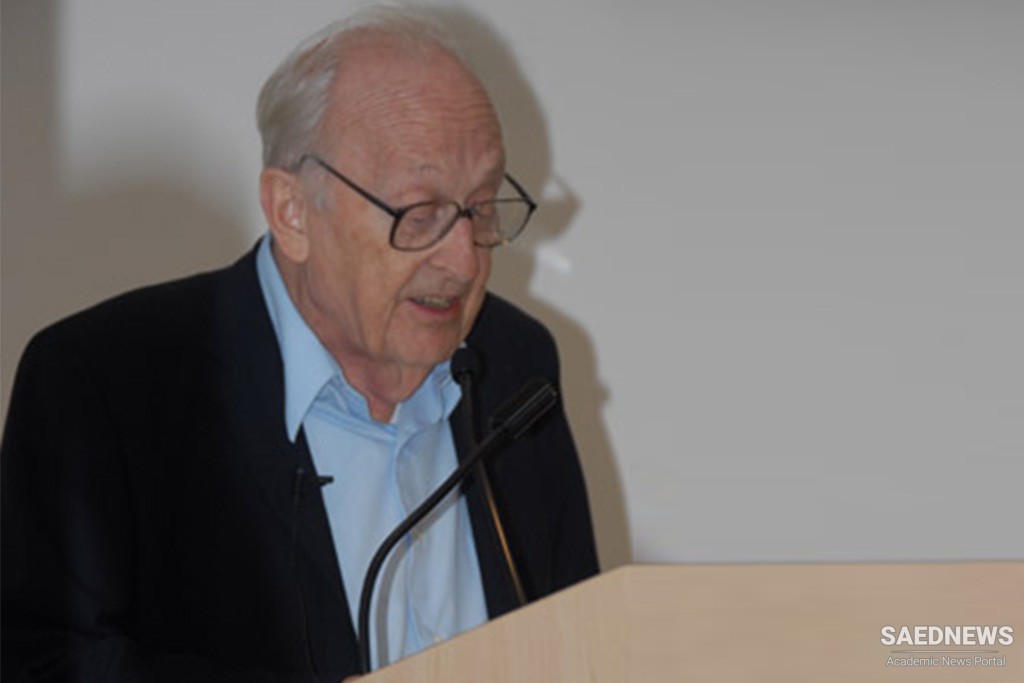In 1957, he received his Ph.D. from the University of Hamburg in the field of Indo-Iranian Studies. He worked as a research fellow at Deccan College, in Poona, from 1959 to 1961, and he taught at the University of Saugor (now Doctor Harisingh Gour Vishwavidyalaya Sagar University), in India, between 1961 and 1964. He was an assistant professor at the University of Tübingen from 1965 to 1967 and was then offered a position as a professor of Indo-Iranian Studies at the University of California, Los Angeles, where he remained until his retirement in 2000. For two years (1974-76), he was also a visiting professor of Sanskrit and Old and Middle Iranian at the University of Leiden.
At the University of Hamburg, Schmidt studied under the direction of Ludwig Alsdorf (1904-78), a prominent Indologist, who had worked with serious figures in the field, such as Christian Bartholomae (1855-1925), Heinrich Zimmer (1890-1943), and Heinrich Lüders (1869-1943) (Bruhn et al., 1989, pp. 5-6). Schmidt also studied Middle Iranian with Olaf Hansen (1902-69) and took courses with Franz Altheim (1898-1976). The scholar who had the greatest influence on him, however, was his long-time friend and teacher, Wolfgang Lentz (1900-1986), a professor of Iranian at the University of Hamburg. Schmidt’s dissertation, in which he systematically compared the Indo-Iranian term for “vow” in the Vedas and the Avesta, was published in 1958 under the title Vedish vratá und awestisch urvāta.
Schmidt’s main contribution to Iranian Studies was his research into the Gathas of Zoroaster, following Wolfgang Lentz’s work. In 1968, he published an important article on the composition of Yasna 49, where he and Lentz looked at the composition and the stylistics used by the poet to make his message resonate. This line of inquiry continued with his study of Yasna 47, written in honor of Wolfgang Lentz in 1974. In 1986, he, Lentz, and Stanley Insler published a monograph on the form and the meaning of Yasna 33, which followed the structural analysis traditionally used to study the Gathas. While Schmidt was at Leiden, his inaugural lecture was published as a monograph, Zarathustra’s Religion and His Pastoral Imagery (1975b). In this work, he brought forth a new way of thinking about Zoroaster, in which the cow in the Gathas stands as a metaphor for the daēna. This work was followed by a number of articles in Avestan studies, including a review of Gathic studies and the most important debates dividing scholars in the field (1979 and 2003).
Schmidt also made valuable contributions to the study of the animal world in both Zoroastrianism and the Indian tradition. Early in his career, he wrote two important articles; one on the cobra in the Rig Veda (1963b), and one on the Zoroastrian classification of animals (1980a; see MAMMALS iii.), in which he compared Iranian material with Greek and Indic evidence. Schmidt wrote several articles on the fabulous mythical bird, Simorḡ (1980c and 1980d), tracing its origins from the Indo-Iranian world through the Sasanian and the Perso-Islamic tradition. Another significant contribution made by Schmidt includes his study of the origins of ahimsa (1968c), which supports Alsdorf’s findings about non-violence to the animal world. Worthy of attention is also Schmidt’s work on Akūpāra, in which he discusses the meaning of the giant turtle supporting the world in the Indic tradition (1984).
Another field to which Schmidt made a great contribution is the study of the Indo-Iranian god Mithra, its function and its original meaning in the Indo-Iranian world and beyond (1977, 1978, 2006). Schmidt’s new translation of the Yeŋhē hātąm prayer (1960) also added to the study of Zoroastrianism. This publication was followed by his study of the Sixteen Sanskrit Ślokas, the Zoroastrian tenets explained to the Indian ruler by the Parsis when they first arrived in India (1963; repr. in Williams 2009, pp. 229-38). He also studied the notion of the body after death (1994), the nature of the demon Ahriman (1996a), and the demon Āzi-/Āz in the Zoroastrian and Manichaean tradition (2000).


 GEORG FRIEDRICH GROTEFEND
GEORG FRIEDRICH GROTEFEND














































